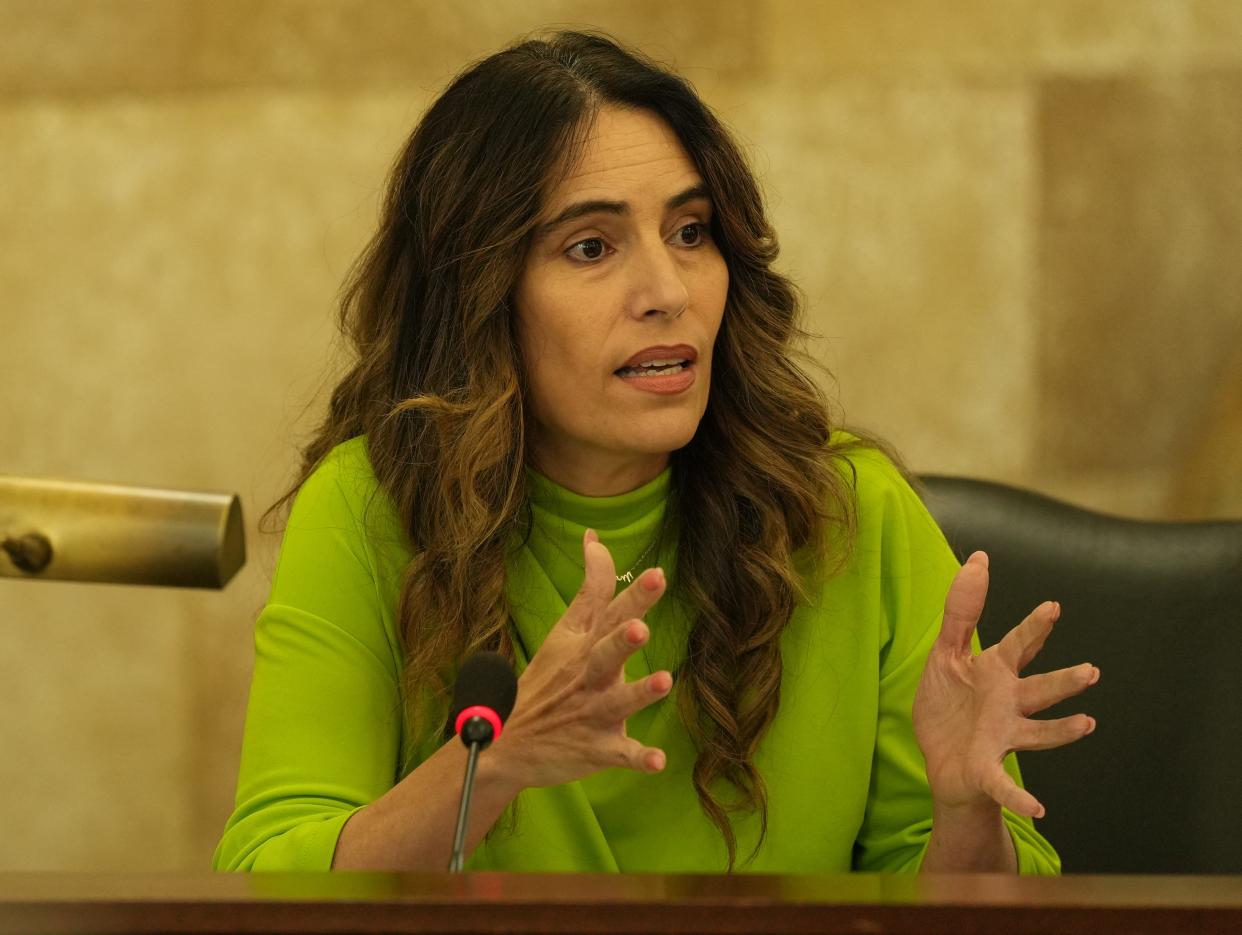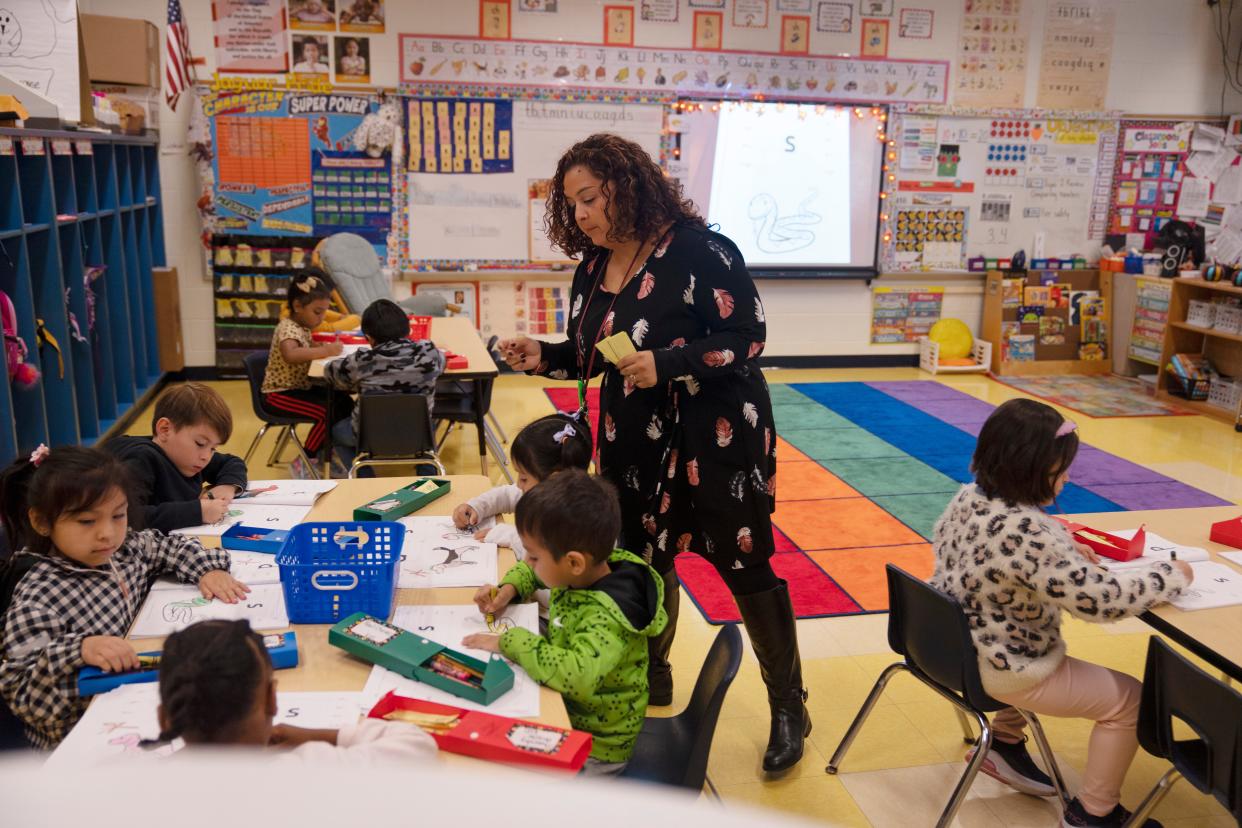After COVID, K-12 students in NJ still lag significantly in math
Most students in New Jersey are still behind in math four years after the COVID-19 pandemic hit, says a study by researchers from Harvard and Stanford universities that measured school districts nationwide on a common scale.
And a report commissioned by the Murphy administration released this month said New Jersey’s schoolchildren suffered significant learning losses during the pandemic, more in math than in reading. Losses would have been far less steep had schools reopened in person earlier, said the report, compiled by Boston Consulting Group and a law firm, examining the state’s response to COVID.
The state-commissioned report measured learning loss by comparing math and reading scores on a nationally administered test, the National Assessment for Education Progress, or NAEP, in 2019 and 2022 — before the pandemic began and after the health emergency ended.
Story continues after photo gallery.
Eighth graders showed the sharpest declines in math, by 11 points, compared with the national average drop in math scores on the NAEP of 8 points.
The state was aware of this in October 2022, yet efforts by legislators to have the Education Department formally target learning loss have failed. State Sen. Teresa Ruiz, D-Essex, the Senate majority leader, has sponsored a bundle of four bills to create a learning loss czar in the department, now headed by Kevin Dehmer, who replaced former acting Commissioner Angelica Allen-McMillan after she retired in January.
Ruiz has said the state hasn’t approached the issue with urgency. A year and half later, most New Jersey students are still lagging, by a lot.

The Harvard-Stanford study, called the Education Recovery Scorecard, looked at New Jersey Student Learning Assessment test scores to study academic recovery.
If New Jersey’s schoolchildren continue catching up at their current pace, they would need an additional three years to return to 2019-level scores in math, said the authors of the Harvard-Stanford study.
With the final round of federal COVID relief funds set to expire in October, school leaders have just a few months left to rethink spending plans. Schools should divert remaining federal aid to learning remediation programs, the Harvard-Stanford study authors said.
Students in high-poverty districts had significant learning loss
Many high-poverty districts, such as New Brunswick, Paterson and Newark, lost more than a full year’s worth of grade-level learning in math between 2019 and 2022, the study shows. Paterson declined by 1.22 points — one point means one grade level’s worth of learning — while the city of Passaic lost around half a year's learning in math. Both districts made up very little, just 0.09 points, in 2023.
New Milford lost very little math learning in comparison, only 0.19 points. Wealthier, suburban Ridgewood lost 0.44 points in math learning, less than a half-year's worth. Districts vary in size, income levels and number of students served.
Some districts are outliers. Urban, mostly Hispanic-speaking Union City in Hudson County lost very little ground in math, as did suburban Monroe Township in Middlesex County.
Saying only that New Jersey saw a drop in math scores is an oversimplification and could leave parents misinformed, said Harvard economist and lead researcher Thomas Kane. The state has a duty to inform them now, in the spring, about how far behind their students are.
“With federal relief dollars drying up, state leaders must ensure the remaining dollars expand learning opportunities in the summer of 2024 and through tutoring and after-school contracts next year,” Kane said.

“Parents think their child hasn't lost much ground because I think they see the school buses running again and they think everything's fine," Kane said. "They don't realize that, wait a minute, these kids are half a year or a year behind where they would have been at this time before the pandemic.”
"It's so important that schools let parents know now, before the summer, because the dollars are about to run out," he said. "We want as many parents to know as possible this spring, not waiting for when the state test scores come back.”
Students in New Jersey fared much better in reading after the pandemic, recovering almost half of the loss from the pandemic, Kane said. “If that continues this year, the statewide average reading achievement should be back at 2019 levels this spring,” he said.
Achievement 'chasm' for marginalized students
The pandemic expanded the existing achievement gap between wealthy, mostly white suburban students and low-income and Black and Hispanic students into a “chasm,” the state-commissioned report said.
Urban, low-income school districts did not have laptops and internet access available for every student in the early months of school shutdowns in spring 2020. Urban districts were also among the last to return to full-time in-person schooling, even after they supplied students with technology.
Longer periods of time in hybrid and virtual school are linked to bigger drops in learning, the report said, affecting urban students the most.
In the 2020-21 school year, 51% of Black and 47% of Hispanic students were remote, compared with 30% of Asian and 19% of white students in the state.
The Education Department did not comment on the findings in the study commissioned by the state.
“It is what it is,” Phil Murphy said on “Ask Governor Murphy,” a radio show on WNYC, when asked about learning loss due to school closures and mask mandates.
States such as Florida “rolled the dice,” he said. Florida mandated that schools stay open and in-person in August 2020. New Jersey, on the other hand, instructed districts to open in-person or stay remote in September 2020 as they saw fit and to follow COVID mitigation measures, such as social distancing and testing.
Though it is still a top-performing state, New Jersey's score dropped in comparison with the national average on the NAEP. Florida's decline stayed above the national average, but so did those of Illinois and California, both of which followed mitigation strategies similar to New Jersey's.
Schools were closed by Murphy’s executive order in March 2020. They were not ordered to fully reopen in person until fall 2021.
“The challenge is you've got over 600 districts, with all the issues and dynamics that go with local realities," Murphy said on the air. "I spent a lot of time imploring superintendents and principals to get on the path to fully reopen ... not surprisingly, the schools that stayed remote the longest are where the biggest challenges are.”
The state study praised New Jersey as a national model in supplying free meals to schoolchildren in the poorest districts early in the pandemic. But the Education Department was not able to coordinate among hundreds of school districts to measure academic progress in the 2020-21 school year, when standardized tests were suspended.
The governor’s office could also have acted faster to inform schools about how long they would stay closed in 2020, the report said. And poorer districts lacked the technology needed to switch to remote learning in the early months, it said, though the state mobilized quickly to bridge the digital divide.
This article originally appeared on NorthJersey.com: After COVID, NJ's K-12 students still lag in math
